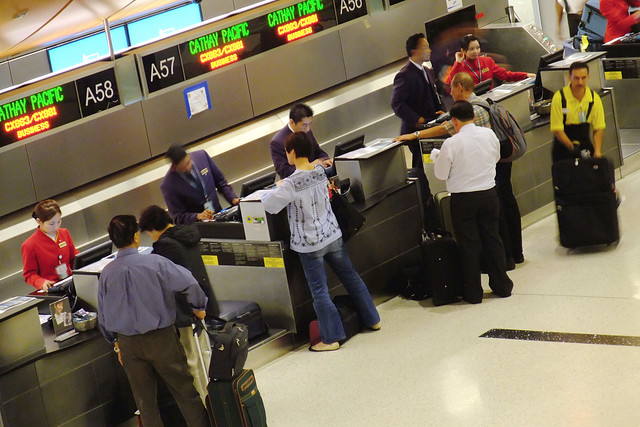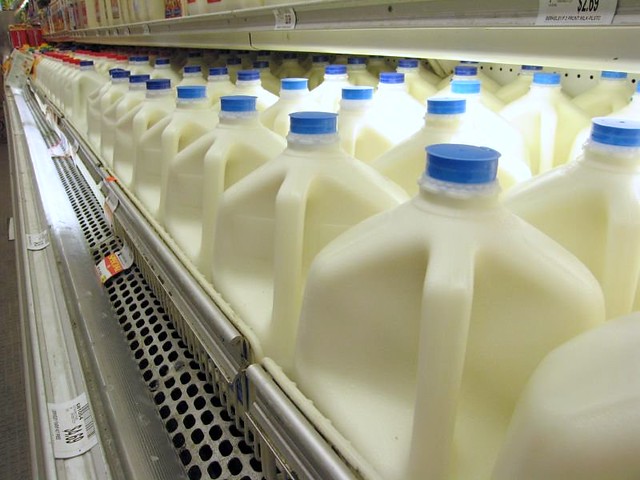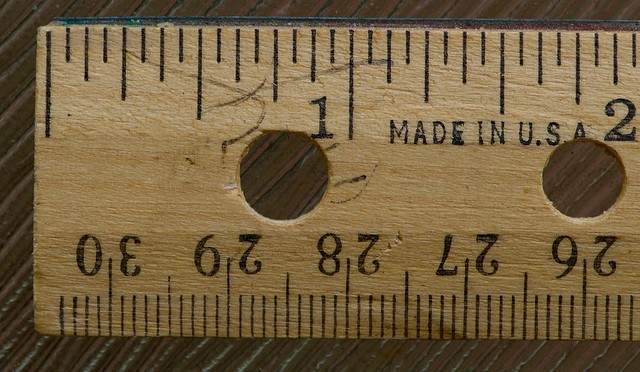Back in the 90s, I hopped on the plane with my parents and moved to the US, barely speaking a word of English. Clueless and weird, sticking out like a sore thumb in my elementary school class of Americans, the only silver lining for me was that at least numbers are the same all over the world. It was customary to end the school day with a little math quiz, where we’d solve math problems in small teams, and the first team to solve it would be the first one to go home. (…that is, walk out to the parking lot to the school buses that of course waited for everyone.) I was a popular team mate, because even if conversation with that weird Finnish girl was out of the question, at least she was quick at math.
Imagine my bewilderment when one day, the problem was: How many ounces are there in 2 gallons, 1 quart and 3 cups of water?
????? WTF???? Is this some kind of joke??

Yes it is, a big joke, and this joke just goes on and on. On 6th grade, I fought with my class mates about which system of units made more sense, and my mates wouldn’t admit defeat even when none of them were able to tell me how many yards are in a mile. Well can you tell us, how many centimeters is in a kilometer? Eh, of course I can…
On 7th grade, I finally ran into a math teacher who felt my pain. I made my case of how the local American units were incomprehensible and metric system the only real one for the academic world, and to my great surprise I got a permission to skip all math problems that involved calculating with US units. My teacher Mr. Lipsky told me back then that he was pretty sure US would switch over to the metric system within a couple of decades. Now, a couple decades later, Mr. Lipsky’s probably lost hope on that miracle, Americans continue running on gallons, and I’m still clueless when it comes to ounces.
I have learned something, though, so here are my little tips and tricks on how I’ve made this irritatingly irrational system work for me.

Temperature: Fahrenheit
The Fahrenheit scale is actually pretty simple: 0F is “colder than it ever gets outside”, and 100C is “human with a mild fever”. For real, this is no joke. The Dutch Mr. Fahrenheit just happened to be making his measurements of “coldest it ever gets” in Iceland on a particularly mild winter, so “zero” is just -18C and negative F-digits aren’t rare in the North. 100F is 37.7C.
There’s of course a formula for transforming Fahrenheit to Celsius, but usually I just give up and go with my gut feeling, which is something like this:
Below 0: Actually cold.
0-32: Not-so-cold freezing. Water freezes at 32F.
40s and 50s: Take a coat when you go outside.
60s: You won’t need a coat.
Lower 70s: Room temperature.
80s: Nice and hot.
90s: Not-so-nice hot.
100s: Too hot, don’t go out. Unless you’re intent on touring Death Valley.
With oven temperatures, the figures are so large and tolerances so wide that a simplified formula of 2 x Celsius = Fahrenheit works just fine. At least with our snapping gas oven with a not-too-particular thermostat.

Weight: Pounds and Ounces
One pound is 453 grams, around the weight of a standard-sized package of minced meat. You can divide pounds by two, and when you round up a bit, you end up with kilos. Or you can multiply kilos by two, and when you round down a bit you get pounds.
I never use ounces, because things that weight less than a pound are super light anyway, and anything packaged in the stores also displays grams.

Volume: gallons, quarts, pints, cups and ounces
One gallon is 3.8 liters, which is easy to comprehend, because milk here is sold in containers of one gallon, and everybody knows milk containers. This big plastic jug weighing hellofalot, and mostly when you talk about gallons, it’s always one gallon, maybe two, max three. After that, it’s kind of hard to comprehend liters too, because how easy would it be for you to grasp how much water is actually in a swimming pool of 5000 liters? (Okay, pretty easy, because you can always convert them to cubic decimeters.)
This is a point where Brits and Americans have strayed apart: the names of their units are the same, but the gallon, basis for volume, is different. British gallon is 10 pounds worth of water, around 4.5 liters, a somewhat sane number in an insane system. Americans, though, use the old wine gallons, which as far as I’m concerned aren’t based on anything, but at least you can measure wine with them. For example, one wine barrel has 31.5 wine gallons of wine, which is about as even number as it gets with this system.
One quart is just what it sounds like: a quarter of a gallon. That makes it basically a liter, a little shy of one, but when a recipe asks for a liter of chicken broth, it’s alright to pour in a quart. Add some water if it doesn’t feel like enough.
One pint is half of a quart, a little less than half a liter. Unlike in Europe, beer seems to be rarely measured in pints here, but instead they talk about ounces: 16oz is a large beer, 12oz a small one. It took me ages to learn this, but at least when the bartender asks me Twelve or sixteen ounces? I’m able to pick the bigger number. Wine glasses sold in ounces are still a complete mystery to me, so it’s better to just order a bottle.
A cup is like a large coffee mug (unless you ask Starbucks, where it’s extra small), one fourth of a quart, a little less than 2,5dl. This is the easiest measurement of them all, because our plastic measurement cups also have deciliters marked on the other side.
Ounces… wait, what are ounces doing here, aren’t they a measurement of weight? Well yeah, that too, but they’re also a measurement of volume called a fluid ounce, fl.oz, and guess what: one ounce of water weighs a bit more than an ounce! That makes so much sense that I’ve given up learning ounces also when it comes to volume, and luckily recipes usually talk about fractions of cups.

Distance: miles, yards, feet, inches
When you multiple miles by 1.5 and round up a bit, you get kilometers. Kilometers turn into miles when you snip off around a third, and besides, it doesn’t really matter that much anyway: distances here are measured usually in minutes – like how many minutes it takes to get there with a car – and hiking trail lengths are anyway always a little off.
American speed limits are also in miles. Naturally, in cars made for the US market, the speedometer displays miles so no conversions are needed. The good thing with these cars is that they also have kilometers in small print, so it’s not a problem shipping your car to Europe. The other way around, though…
Yards are like meters for the vertically challenged. The 25 yard swimming pools here are a bit shorter than pools in the rest of the world, but surprise surprise, there are no 50 yard pools: the Olympic pools are measured in meters also here. Maybe the swimmers training in them want to get used to the same lap length they’ll have when they compete abroad. Yards don’t seem to be used very much outside of swimming and other sports, which is a pity, because for a metric person like me, they’re the easiest measurement of distance.
A foot is the foot of some really tall person, because my foot is only 23cm, whereas the foot is around 30cm. In the book Colorado’s Fourteeners, which I otherwise respect a lot for its climbing advice, the mountaineering guru has a chapter called “In Defense of Feet”, where the argument basically seems to be: I have a foot. I don’t have a meter. Now watch out, don’t loose your eyes while you’re rolling them around… In any case, three feet adds up to a yard, so when you multiply feet by three, you get that same vertically challenged meter.
Often with distances, miles are used with decimals, and altitude is measured in feet and feet only – like a Fourteener is a mountain over 14 000 feet, not 2 miles and 3440 feet – but ever so often someone mixes the whole thing up by mixing these two measurement together. I only learned last year how many feet there are in a mile when I subscribed to Denver’s local magazine 5280. Why the name? One mile is 5280 feet, and Denver is the Mile High City.
One inch is a little less than 2.5cm. Sound familiar? A cup is a little less than 2.5 dl! This means four inches is 10 cm, and you can go far with this level of accuracy, just not to Mars.
Feet are never used with decimals and instead, that less-than-a-feet-part is converted to inches. For example, my height is 5 feet 8 inches, in American shorthand 5′ 8″. Sometimes inches can be used with fractions, but I never do that, because then I’d have to admit I’m only 5′ 7½”.
Header photo: Biking Nikon SFO

